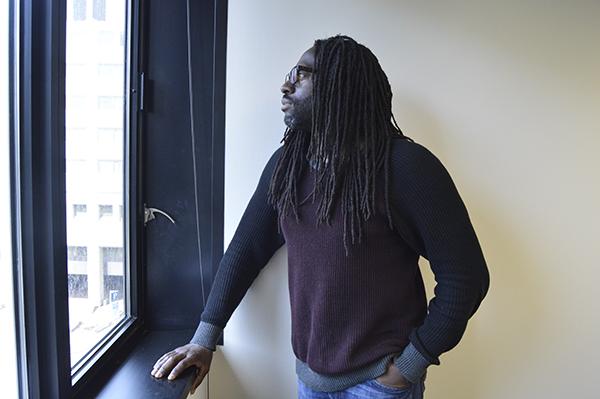Faculty diversity has slowed in recent years.
Six years into a focused effort to improve ethnic and gender diversity in GW’s faculty, the number of full-time minority faculty members has remained stagnant. But as GW aims to increase the diversity in its student body, experts say the effort has become even more critical at the faculty level: Students will feel more comfortable if they see people like them throughout a school’s ranks.
Full-time minority faculty make up about 30 percent of GW’s full-time faculty – a 5 percent increase from 2011. Between 2014 and 2015, the number of full-time minority faculty decreased by one, from 333 in 2014 to 332 in 2015, according to new data from last academic year.
Since 2006, overall the number of minority faculty members have increased, though GW has prioritized diversity hiring most in recent years. Black faculty have increased 89 percent since 2006 – and totaled 89 in 2015, according to the data.
Interim Provost Forrest Maltzman said efforts to diversify faculty over the last several years show progress.
“Hiring a diverse faculty, I think, is an absolutely essential goal, if our goal is hiring the best faculty,” Maltzman said. “Those go arm-in-arm.”
About 18 percent of professors are Asian, 8 percent are black and 4 percent are Hispanic according to the data.
In September, former Vice Provost for Diversity and Inclusion Terri Harris Reed, the first official tasked with increasing the number of minority faculty at GW, left after about four years at the University. Reed previously said increasing faculty diversity is challenging because it requires increasing diversity throughout the hiring and recruitment process as well as making minority faculty feel comfortable enough to stay.
Officials have not yet named a permanent replacement for Reed. They have since changed the title of the position to cover community engagement and multicultural student services.

Since 2011, officials have incentivized offices to hire more minority and female faculty by covering half of their salary for three years using money from GW’s central budget. About 42 percent of full-time faculty are women, a 6 percent increase from 2006, according to the data.
Maltzman said that the hiring initiative is still continuing, and that diversity will remain a priority in hiring practices.
In the fall of 2015, GW hired 12 new, full-time, tenure-track professors in the Columbian College of Arts and Sciences. Of these 12 new professors, two are black – Vanessa Wills and Avery Archer, both professors in the philosophy department.
Archer, an assistant professor, said he immediately felt at home in the department.
“I moved here from Tennessee, and I can say there is a noticeable difference of the university culture here,” Archer said. “I deal with less microaggressions here for example.”
Archer said the problem with some universities is they have one “token” black professor who “fulfills the diversity obligations.”
“I think it is telling that at many other campuses, if they have a job search and hire a black candidate, they would not bring on a second one because they have done their duty,” Archer said. “So I was impressed that even after hiring Wills, I was second and they took me on as well.”
Minority faculty have said an added challenge can be that they are often called upon to be mentors to minority students – which adds responsibilities on top of teaching and research.
But that extra role can also be a benefit. Imani Cheers, a professor of media and public affairs, said that being a black professor allows her to be a mentor for students, showing them they are capable of completing hard work and can succeed.
“The majority of my students have never had a professor of color, in particular a black woman,” Cheers said.
Cheers said although she has seen the University commit to creating a more inclusive environment on campus, there is still plenty of work left to be done.
“There needs to be resources for students who come from diverse populations,” Cheers said.
Increasing the number of minority faculty could also help officials attract and retain more minority students – two of their long-term goals. Officials also named nine black administrators to high-level posts since 2010, though three have left GW or announced their resignations since February 2015.
About 35 percent of the recently admitted Class of 2020 are multicultural students. Officials implemented a test-optional policy last summer in an effort to draw in minority and low-income students, though the percentage of multicultural students admitted was about the same.
Marybeth Gasman, the director of the Penn Center for Minority-Serving Institutions at the University of Pennsylvania, said having diverse faculty is critical to having diverse perspectives represented to students.
“Having a diverse faculty is also a sign of equity and the embracing of opportunity for all,” Gasman, who is also a professor of higher education at the University of Pennsylvania’s Graduate School of Education, said in an email.
She also said a lack of diverse faculty could show a lack of effort – most schools should have no problem attracting minority candidates for positions.
“It signifies that the institution is not serious and is not committed. If you want to do something, you do it,” she said. “Given where GW is located, it should be very diverse. There are no excuses.”
Catherine Moran contributed reporting.








